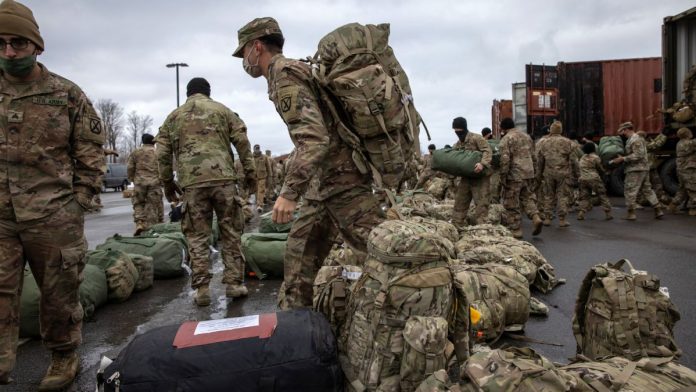Сполучені Штати Америки наразі переглядають свою військову стратегію щодо присутності на території Європи, однак остаточне рішення щодо можливого скорочення контингенту ще не ухвалене. В коментарі для польського медіа TVP Info представник Пентагону заявив, що військова структура наразі перебуває на стадії перегляду, але конкретне рішення ще не прийнято.
“Військова структура нині переглядається, але рішення ще не прийнято. Прихильність США до НАТО є сильною, але США чекають, що європейські союзники очолять звичайну оборону Європи”, — сказав представник Пентагону.
Рішення про перегляд військової присутності США в Європі не є новим, і це частина ширших ініціатив, спрямованих на оптимізацію зусиль у сфері оборони та безпеки. США, незважаючи на свою сильну підтримку НАТО, прагнуть, щоб європейські союзники брали на себе більшу відповідальність за безпеку на своєму континенті. Це відображає зміну акцентів у зовнішній політиці США, де європейські країни все частіше повинні виконувати роль лідерів у забезпеченні стабільності та безпеки на європейському континенті.
Цей перегляд військової стратегії США має також на меті скорочення військових витрат та переосмислення ролі США у глобальних військових операціях. Американські експерти вже давно зазначають, що ефективність НАТО значною мірою залежить від здатності європейських країн більше вкладатися в забезпечення власної оборони, а не покладатися виключно на військові сили США.
З одного боку, Пентагон прагне зменшити своє військове навантаження в Європі, щоб зосередитися на інших важливих геополітичних напрямах, таких як індо-тихоокеанський регіон, де США ведуть конкуренцію з Китаєм. З іншого боку, США хочуть дати своїм європейським союзникам більше автономії у питаннях оборони, що також відповідає стратегії децентралізованої безпеки.
Проте важливим аспектом цієї стратегії є збереження стабільності в Європі. США зберігають свої зобов’язання перед НАТО і продовжують підтримувати колективну оборону Альянсу, який залишається ключовою складовою стратегічної безпеки Сполучених Штатів.
Скорочення військового контингенту США в Європі може мати серйозні наслідки для безпеки на континенті, оскільки це може привести до змін у балансі сил в регіоні. Однак експерти зауважують, що НАТО має велику кількість ресурсів і можливостей для забезпечення оборони, навіть якщо частина збройних сил США буде виведена.
Рішення про зменшення контингенту також може бути пов’язане з вимогами європейських країн, які з 2014 року почали більше інвестувати в свою оборону після анексії Криму Росією та початку військових дій на сході України. Європейські держави поступово почали збільшувати свої оборонні бюджети, і деякі країни вже заявили про готовність брати на себе більше зобов’язань у рамках НАТО.
Одним із факторів, який визначає курс США, є глобальна стратегічна ситуація. На фоні зростання військової потужності Китаю та змагань за вплив в Індійському океані та Тихому океані, США змушені переглядати свої військові стратегії, щоб більш ефективно змагатися в цих регіонах. Переорієнтація з Європи на Тихоокеанський регіон вже давно є частиною довгострокових планів Пентагону.
НАТО, в свою чергу, розуміє важливість збереження американської військової присутності на європейському континенті, особливо на тлі тривалих геополітичних викликів, таких як російська агресія в Україні та глобальні військові напруження. Однак Альянс також прагне до розвитку спільних європейських військових можливостей, що зменшить залежність від США та дозволить забезпечити колективну безпеку без надмірної американської участі.


